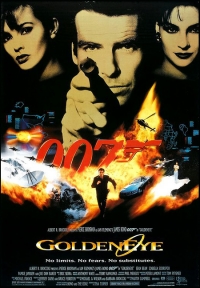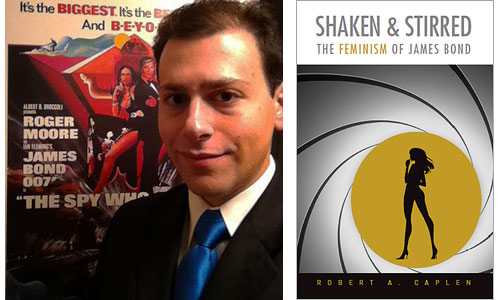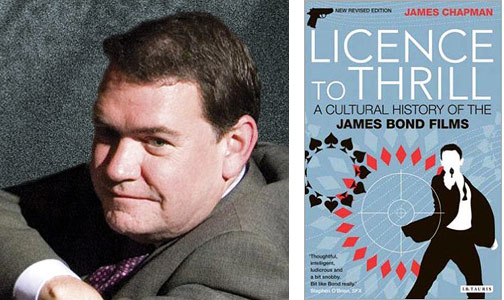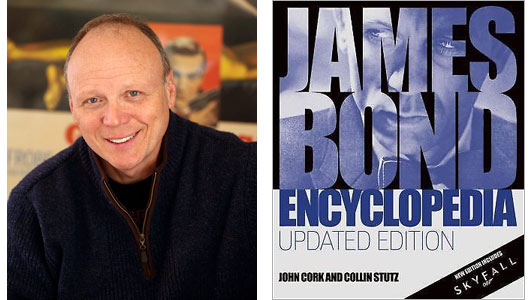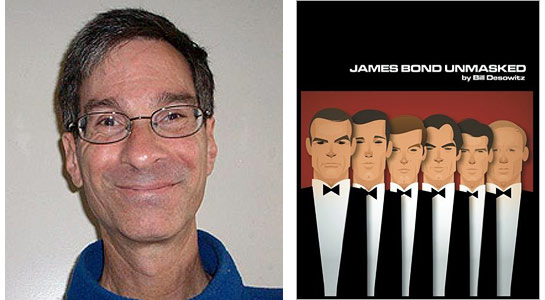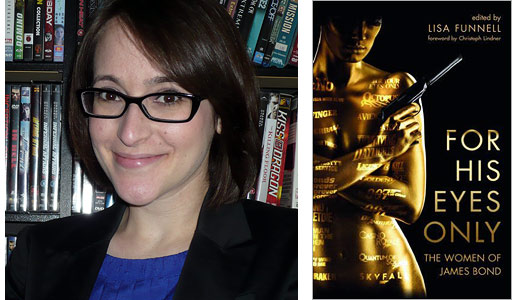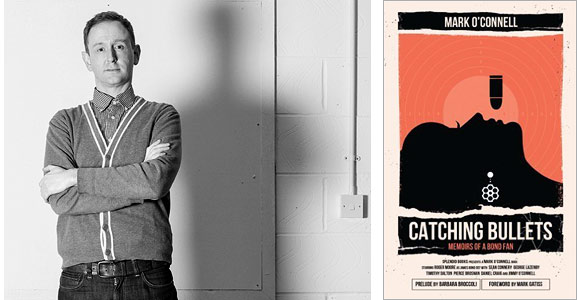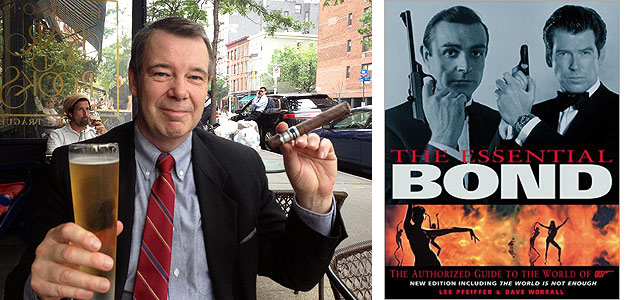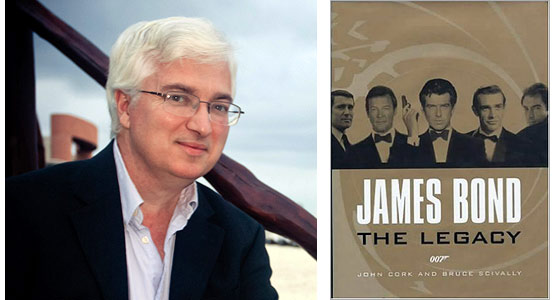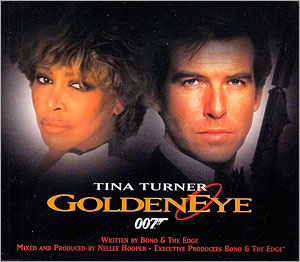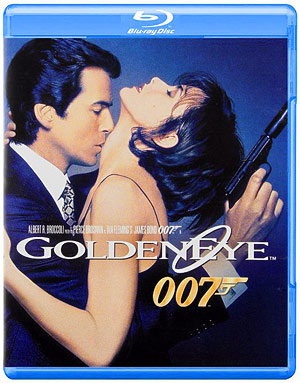The interviews were conducted separately and have been edited into a “roundtable” conversation format.
The participants…
Robert A. Caplen is an attorney and the author of Shaken & Stirred: The Feminism of James Bond (Xlibris, 2010).
James Chapman is a Professor of Film Studies at the University of Leicester and is the author of Licence to Thrill: A Cultural History of the James Bond Films (Tauris, 2007). His other books include Inside the Tardis: The Worlds of Doctor Who—A Cultural History (Tauris, 2006), Saints and Avengers: British Adventure Series of the 1960s (Tauris, 2002), and (with Nicholas J. Cull) Projecting Empire: Imperialism and Popular Cinema (Tauris, 2009). Chapman is also a Council member of the International Association for Media and History and is Editor of the Historical Journal of Film, Radio and Television.
John Cork is the author (with Bruce Scivally) of James Bond: The Legacy (Abrams, 2002). He also wrote (with Maryam d’Abo) Bond Girls Are Forever: The Women of James Bond (Abrams, 2003) and (with Collin Stutz) James Bond Encyclopedia (DK, 2007). He is the president of Cloverland, a multi-media production company, producing documentaries and supplemental material for movies on DVD and Blu-ray, including material for Chariots of Fire, The Hustler, and many of the James Bond and Pink Panther titles. Cork also wrote the screenplay to The Long Walk Home (1990), starring Whoopi Goldberg and Sissy Spacek. He recently wrote and directed the feature documentary You Belong to Me: Sex, Race and Murder on the Suwannee River for producers Jude Hagin and Hillary Saltzman (daughter of original Bond producer, Harry Saltzman); the film is available on iTunes, Google Play and other streaming platforms.
Bill Desowitz is the author of James Bond Unmasked (Spies, 2012). He is the owner of Immersed in Movies, a contributor to Thompson on Hollywood at Indiewire and contributing editor of Animation Scoop at Indiewire. He has also contributed to the Los Angeles Times and USA Today.
Lisa Funnell is the editor of For His Eyes Only: The Women of James Bond (Wallflower, 2015). She is Assistant Professor, Women’s and Gender Studies Program and Affiliate Faculty, Film and Media Studies Program at the University of Oklahoma. Her other books include Warrior Women: Gender, Race, and the Transnational Chinese Action Star (State University of New York, 2015) and (with Philippa Gates) Transnational Asian Identities in Pan-Pacific Cinemas: The Reel Asian Exchange (Routledge, 2011).
Mark O’Connell is a punditeer, the grandson of Bond producer Cubby Broccoli’s chauffeur, and the author of Catching Bullets: Memoirs of a Bond Fan (Splendid Books, 2012).
Lee Pfeiffer is the author (with Philip Lisa) of The Incredible World of 007: An Authorized Celebration of James Bond (Citadel, 1992) and The Films of Sean Connery (Citadel, 2001), and (with Dave Worrall) The Essential Bond: The Authorized Guide to the World of 007 (Boxtree, 1998/Harper Collins, 1999). He also wrote (with Michael Lewis) The Films of Harrison Ford (Citadel, 2002) and (with Dave Worrall) The Great Fox War Movies (20th Century Fox Home Entertainment, 2006). Lee was a producer on the Goldfinger and Thunderball Special Edition LaserDisc sets and is the founder (with Dave Worrall) and Editor-in-Chief of Cinema Retro magazine, which celebrates films of the 1960s and 1970s and is “the Essential Guide to Cult and Classic Movies.”
Bruce Scivally is the author (with John Cork) of James Bond: The Legacy (Abrams, 2002). He has also written Superman on Film, Television, Radio & Broadway (McFarland, 2006), Billion Dollar Batman: A History of the Caped Crusader on Film, Radio and Television from 10¢ Comic Book to Global Icon (Henry Gray, 2011), and Dracula FAQ: All That’s Left to Know About the Count from Transylvania (Backbeat, 2015). As well, he has written and produced numerous documentaries and featurettes that have appeared as supplemental material on LaserDisc, DVD and Blu-ray Disc, including several of the Charlie Chan, James Bond, and Pink Panther releases. He is the Vice President of New Dimension Media in Chicago, Illinois.
And now that the participants have been introduced, might I suggest preparing a martini (shaken, not stirred, of course) and cueing up the soundtrack album to GoldenEye, and then enjoy the conversation with these James Bond authorities.
---
Michael Coate (The Digital Bits): In what way is GoldenEye worthy of celebration on its 20th anniversary?
Robert A. Caplen: Has it really been twenty years since Pierce Brosnan ended the Bond franchise’s longest hiatus?! Timothy Dalton’s last film, Licence to Kill, was released in June 1989; the Berlin Wall came down five months later. GoldenEye, with its lavish title sequence that depicts the toppling of the Soviet Union and global geopolitical changes, ushered in a new era by introducing Bond and audiences to the post-Cold War era. It marked the appearance of Dame Judy Dench as M, who pulls no punches and criticizes Bond’s cavalier, sexist, and misogynist attitude as a “relic of the Cold War.” Restoring the luxury, glamour, and peccadilloes of Agent 007 in a manner that is reminiscent of the Sean Connery era while simultaneously placing James Bond under the supervision of a female authority figure, GoldenEye is undoubtedly an important installment in the James Bond oeuvre and, arguably, Pierce Brosnan’s most successful mission.
James Chapman: GoldenEye might not be the best Bond movie ever but it is one of the most important in the series’ history as it was the film that revived the franchise after the hiatus of the early 1990s. The reasons for that have been well documented and perhaps we needn’t go over them again here. The legal disputes between Eon/Danjaq and MGM were part of it, but I think a more fundamental issue was the feeling that Bond had lost ground to other action-adventure franchises: Lethal Weapon, Die Hard, Speed, the Schwarzenegger and Stallone films. Licence to Kill was down at the box-office and did very poorly in the US market (about $35 million—way below Lethal Weapon 2 and Batman that summer). It’s hard to credit it now, but there was a lot of speculation in the early 1990s that Bond was finished—some very respected film critics and industry figures were suggesting that Bond was a relic of the past. And the longer the hiatus went on, the more plausible that view seemed…. GoldenEye did very good box-office—over $100 million in the US market, which by then had become the benchmark for a major success, and around $331 million worldwide—and proved the naysayers wrong. I think its importance was that it proved there was still a market for a Bond movie. One of the things I like most about it is that it addresses the charges that had been made against Bond—that he was an outmoded and chauvinistic heroic archetype—by voicing them itself through the agency of a female authority figure (i.e. Judi Dench’s “sexist, misogynist dinosaur, a relic of the Cold War” line).
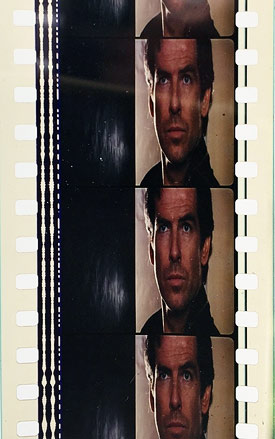 John Cork: GoldenEye saved James Bond and MGM. 007’s darkest days were from 1989 until November 1995. In 1990, MGM (which owned United Artists) collapsed in on itself. Raped of much of its library by Ted Turner earlier in the decade and bought through a questionable process of future profit dismemberment by Giancarlo Parretti, Cubby Broccoli and Michael Wilson found Bond trapped at a studio that could no longer operate as a viable business. The trades were filled with stories of the Bond franchise being put up for sale and even predictions that—after the disappointing grosses of Licence to Kill and the fall of the Soviet Empire—007 was dead. After Parretti and his studio team lead by Alan Ladd Jr. left, MGM was owned by the bank Crédit Lyonnais and run by Frank Mancuso Jr. and John Calley. The plan was simple: prove to potential buyers that MGM’s assets were of much greater value than MGM’s debts, and that it was well-positioned to make new hit movies. The industry had serious doubts. In 1993, the studio had failed to revive the Pink Panther series with Son of the Pink Panther, and available cash to produce new films was limited. As far as James Bond went, the studio had no faith in Timothy Dalton’s ability to reprise his role as Bond, forcing him to retire from the role. This meant casting a new Bond, investing heavily in a new film and finding a workable relationship with Cubby Broccoli, Michael Wilson and Barbara Broccoli. It was no secret at the time that some inside MGM wanted to push Danjaq out of the way, hire a producer like Joel Silver, and control the film internally. The studio decided to position the film as a summer blockbuster for 1995, the launch for what the studio hoped would be a series of hit films in the second half of 1995 that would relaunch MGM as a valuable property that could be sold for a very high price. After the success of Fox’s True Lies in 1994, MGM concluded that GoldenEye needed a tighter script, bigger action and more time. Now, instead of launching MGM’s season of hits, it would come in the middle. Mancuso and Calley had bet everything on the fall of 1995. The studio would release six films from September to December, and literally everything was on the line. Three of the films were bombs: Hackers, Showgirls and Cutthroat Island. Both Get Shorty and Leaving Las Vegas made money for the studio. As far as the industry was concerned, only one film mattered: GoldenEye. The fate of the studio rested in the hands of James Bond, and GoldenEye’s success would not only confidently state that there was profit to be wrung from future 007 films, but it would drive up the value of the Bond catalog. GoldenEye proved all the doubters wrong. Bond’s continued relevance, it turned out, had little to do with Cold War politics or studio equity. It had everything to do with quality. Everyone involved in making GoldenEye was hungry, and it shows. The film is also the introduction of Barbara Broccoli as a key creative voice in the Bond team, the launch of Pierce Bronsan’s career as Bond, and the best evidence that the creative team could take 007 beyond the decades that defined him.
John Cork: GoldenEye saved James Bond and MGM. 007’s darkest days were from 1989 until November 1995. In 1990, MGM (which owned United Artists) collapsed in on itself. Raped of much of its library by Ted Turner earlier in the decade and bought through a questionable process of future profit dismemberment by Giancarlo Parretti, Cubby Broccoli and Michael Wilson found Bond trapped at a studio that could no longer operate as a viable business. The trades were filled with stories of the Bond franchise being put up for sale and even predictions that—after the disappointing grosses of Licence to Kill and the fall of the Soviet Empire—007 was dead. After Parretti and his studio team lead by Alan Ladd Jr. left, MGM was owned by the bank Crédit Lyonnais and run by Frank Mancuso Jr. and John Calley. The plan was simple: prove to potential buyers that MGM’s assets were of much greater value than MGM’s debts, and that it was well-positioned to make new hit movies. The industry had serious doubts. In 1993, the studio had failed to revive the Pink Panther series with Son of the Pink Panther, and available cash to produce new films was limited. As far as James Bond went, the studio had no faith in Timothy Dalton’s ability to reprise his role as Bond, forcing him to retire from the role. This meant casting a new Bond, investing heavily in a new film and finding a workable relationship with Cubby Broccoli, Michael Wilson and Barbara Broccoli. It was no secret at the time that some inside MGM wanted to push Danjaq out of the way, hire a producer like Joel Silver, and control the film internally. The studio decided to position the film as a summer blockbuster for 1995, the launch for what the studio hoped would be a series of hit films in the second half of 1995 that would relaunch MGM as a valuable property that could be sold for a very high price. After the success of Fox’s True Lies in 1994, MGM concluded that GoldenEye needed a tighter script, bigger action and more time. Now, instead of launching MGM’s season of hits, it would come in the middle. Mancuso and Calley had bet everything on the fall of 1995. The studio would release six films from September to December, and literally everything was on the line. Three of the films were bombs: Hackers, Showgirls and Cutthroat Island. Both Get Shorty and Leaving Las Vegas made money for the studio. As far as the industry was concerned, only one film mattered: GoldenEye. The fate of the studio rested in the hands of James Bond, and GoldenEye’s success would not only confidently state that there was profit to be wrung from future 007 films, but it would drive up the value of the Bond catalog. GoldenEye proved all the doubters wrong. Bond’s continued relevance, it turned out, had little to do with Cold War politics or studio equity. It had everything to do with quality. Everyone involved in making GoldenEye was hungry, and it shows. The film is also the introduction of Barbara Broccoli as a key creative voice in the Bond team, the launch of Pierce Bronsan’s career as Bond, and the best evidence that the creative team could take 007 beyond the decades that defined him.
Bill Desowitz: GoldenEye is significant as a turning point with the introduction of Pierce Brosnan and a popular return to a more classic Bond. After a six-year hiatus (the longest in franchise history), fans craved Bond and Brosnan delivered a back to basics approach after the dramatic extreme of Timothy Dalton’s Licence to Kill. With Michael Wilson and Barbara Broccoli taking over as producers, there was a celebration of the familiar Bond trappings with a renewed sense of action, style and humor, and Brosnan was happy to oblige. At the same time, they successfully answered the question: How did Bond fit in a post-Cold War world? And new director Martin Campbell made it fast-paced and fun. Although Brosnan was initially supposed to succeed Roger Moore, his delay worked out for the best and he was a better Bond.
Lisa Funnell: GoldenEye is an important film because it helped to (re)ignite popular interest in the franchise after a six-year hiatus. The film not only marks the return of the iconic hero to the silver screen but also more pointedly asks if the world still needs James Bond. GoldenEye relays the impression that the world around Bond has changed particularly in terms of its gender politics. This is most evident in the casting of Dame Judi Dench in the role of M, Bond’s boss, as well as the comments she makes to Bond such as: “I think you’re a sexist, misogynist dinosaur. A relic of the Cold War, whose boyish charms, though lost on me, obviously appealed to that young girl I sent out to evaluate you…If you think I don’t have the balls to send a man out to die, your instincts are dead wrong. I’ve no compunction about sending you to your death. But I won’t do it on a whim.” In this (drop-the-mic) speech, M also draws attention to changes in the geopolitical landscape with the fall of the Soviet Union and the end of the Cold War. It draws attention to the threat of individual actors/cells rather than sovereign nations to the safety of Britain and the world. And so the film answers its own question by demonstrating that we still need James Bond to save the day—a hero who is defined by instincts, touch, and interpersonal relationships. This question has been raised again twenty years later in SPECTRE and broadly applied to the 00 program in light of the digital turn and advances in surveillance technologies like drones.
Mark O’Connell: It marked the official changing of the guard at Eon Headquarters with Barbara Broccoli and Michael G Wilson officially taking the producer reins, a new actor as Bond and a much needed cinematic Vodka martini after a long, long Bond film drought. It also was the cherry bursting moment for a vital new wave of Bond fans and general audiences. To a lot of people GoldenEye is their Dr. No or On Her Majesty’s Secret Service. And if that is their entry point they are not wrong. Too much elitist shepherding happens in Bond fandom. Whilst reworking that recognizable Bond film template, GoldenEye thankfully shatters the templates of what a Bond fan should like and not like.
Lee Pfeiffer: GoldenEye is the film that rescued Bond from the brink of cinematic extinction. At the time producer Cubby Broccoli was at odds with the management team of United Artists, who he blamed for the relatively light domestic grosses for Licence to Kill in 1989. Broccoli swore he would not make another Bond film until a new management team took over. Ultimately, a new team headed by Alan Ladd Jr. and Frank Mancuso took the reins of the struggling studio which was on the brink of bankruptcy. They backed Cubby’s desire to bring Bond back even though the smart money said 007 was an outdated relic of the Cold War. I went to dinner in New York with Cubby and his wife Dana around the time they were preparing for the new film. Cubby said that he was bowing out of the day-to-day production duties and relegating the franchise to the care of “the kids,” meaning his daughter Barbara and stepson Michael G. Wilson. Both of them had long experience working on the franchise and Cubby and Dana felt confident that they could make Bond work again with a new generation of moviegoers. He also rattled off a top secret list of actors that had been screen tested for the role before stating the obvious: the vast majority of people wanted Pierce Brosnan. Actually, Brosnan had been signed for the role in 1986 when Roger Moore retired but NBC did him dirty by renewing his TV series Remington Steele, thus taking him out of the running for the part. Timothy Dalton had replaced him but after a gap of five years off screen, Dalton bowed out and Brosnan finally got his chance. GoldenEye, although modestly budgeted by today’s standards, was still considered a major risk. However, when the teaser trailer was screened months ahead of the opening, confidence was built based on wildly enthusiastic audience reactions. The film opened in New York City at Radio City Music Hall for a gala premiere one week before the British premiere. At the UK premiere, I rather cautiously broached the subject of the U.S. grosses with Michael Wilson. In those days, news traveled slowly so I didn’t know how the film was performing in the States. Wilson smiled broadly and said that the grosses were of blockbuster status. The rest of the world followed suit and proved that there was room indeed for a post-Cold War 007.
Bruce Scivally: GoldenEye is worthy of celebration for being the Bond film that brought 007 into the modern era. Licence to Kill seemed like a glorified TV episode, like Miami Vice on steroids, with an aesthetic more befitting the ’70s than the late 80s. GoldenEye, with a much bigger budget, managed to keep all the elements audiences expected from Bond and make them seem fresh—no small feat for a series then entering its 33rd year. On top of that, the film introduced Pierce Brosnan as James Bond. That alone is cause for celebration. The film also ushered in a new wave of spy mania, with spy films hitting movie screens and spy-themed shows on television in a quantity last seen thirty years earlier, when the one-two punch of Goldfinger and Thunderball made spies the coolest anti-heroes of the 1960s.
Coate: When did you first see GoldenEye and what was your reaction?
Caplen: I was in high school when GoldenEye was released and remember thoroughly enjoying the film. For me, GoldenEye had the feel of a Sean Connery film that was refreshing and exciting. I also remember the television infomercials for the VHS collector’s edition of the films that were linked to the film’s release. I ultimately had at my fingertips a personal library of 007 films, helping pave the way to my becoming a 007 scholar.
Chapman: The Odeon cinema in Sheffield when it was released in 1995. My first thought was simply to be thankful that there was a new Bond movie after six and a half years. And then to be thankful that it was a pretty decent Bond movie—recognizable as a Bond movie and not going down the Lethal Weapon/Die Hard route. I thought the jury might be out on Pierce Brosnan—I’d liked Timothy Dalton’s interpretation of Bond—though I warmed to him. I didn’t think GoldenEye was as good an introduction for Pierce as The Living Daylights had been for Tim. I thought it took a while to get going and that the first half was quite loosely structured. But it really picked up with the St. Petersburg scenes from the Statue Park through to the tank chase…. I have a “theory” (that might be putting it too strongly) that the pre-title sequence of GoldenEye was in a sense writing Dalton’s Bond out of the series’ history, just as Connery’s return in Diamonds seemed to be concerned to erase the memory of Lazenby and On Her Majesty’s Secret Service. Hence the pre-title of GoldenEye is set in 1986—the year that Brosnan nearly became Bond but was thwarted at the eleventh hour by his Remington Steele contract. It’s as if the film is saying that Brosnan should have been Bond all along.
Cork: I first saw about 40 minutes of cut footage from GoldenEye at Leavesden in the summer of 1995 when I was working on the behind-the-scenes documentaries for the Goldfinger and Thunderball LaserDisc releases. Lee Pfeiffer and I got asked if we wanted to see the assembled footage so far and we jumped at the chance. The first time I saw the entire film was at a sneak screening in Hollywood that was quasi-open to the public. I think I saw it three more times at press screenings before I went to New York for the premiere at Radio City Music Hall! As some know, I had been working with the producers on another project during the development of GoldenEye. I would see Michael France in the office occasionally. After I had finished my work, I would still see Barbara and Michael in Los Angeles when something would bring me into the Danjaq offices, and I would get little updates on what was happening. I got to know Bruce Feirstein during his tenure working on the film, and he, like the late Michael France, is a writer I admired. So, even though I had absolutely nothing to do with GoldenEye, I felt personally invested in it. I had seen the hard work, the nerves, and witnessed some of the normal tug of war with the studio over the development process. So I was really rooting for the film. My reaction was not only that of a fan, but it was like I was watching a friend’s child in a competition: I was rooting for every scene, loved what I was seeing, but constantly on edge about any aspect that I thought could be better. It really took me about six viewings before I could watch the film and completely enjoy it just as a film.
Desowitz: I saw it opening night in Westwood and couldn’t have been more pleased. Brosnan proved that Bond was still relevant with a sense of pride and joy.
Funnell: I first watched GoldenEye at home with my dad. The film was his Christmas gift and we watched it soon after it was unwrapped. Although I cannot recall my exact reaction, two things have always resonated with me. The first is how perfectly suited (pun intended!) Pierce Brosnan was for the role; he looks and feels like James Bond unlike actor Timothy Dalton before him. The second is how differently women are depicted in the film. I love the casting of Dame Judi Dench for the role as M and her questioning of the sexual politics of the franchise. Her critique is supported through the characterization of Natalya Simonova who demands a lot from Bond. With this film, I felt that something had changed in the gender politics of the franchise and I liked this new turn.
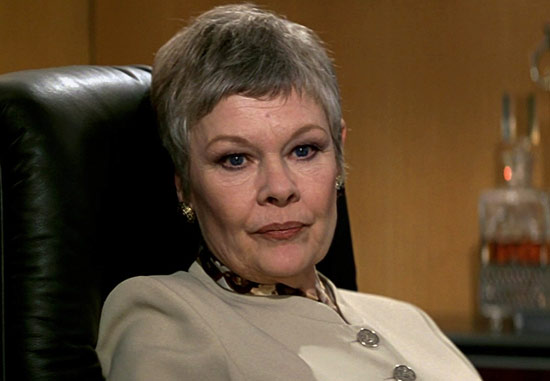
O’Connell: I first saw GoldenEye the week it came out and loved it. The atmosphere in the cinema was like a circus—with cheers, chat and a lot of clapping at the right times. That interaction is normally my idea of movie-watching hell, but the crowd were behind the film from those two white dots onwards. I loved that it was a Bond film again—not for the stunts or the music or the big budget caper of it all, but the ridiculous things like that Binder credit font was back, big set British production work was back, the branding of Bond was back (that black and white teaser and the Tina Turner track), film heroes in almost anachronistic shirt and ties were back, society launch parties gone wrong were back and expert model work and remote control helicopters were back!
Pfeiffer: I first saw [the completed] GoldenEye at the Radio City Music Hall premiere. I must confess, I was not enamored with it. Neither were most of the die-hard Bond scholars who were with me that night. Perhaps my expectations were too high, but I thought the overall story line was somewhat smaller-than-life. The villain wants to create chaos in the worldwide financial communities. I thought that was a rather bland concept, although it did prove to be somewhat prophetic. Today, that threat would seem more unnerving as the world is far more linked by on-line transactions. I also thought the musical score by Eric Serra was bland and boring, and that the character of Boris—played by young up-and-comer Alan Cumming, was badly used in the script—particularly his absurd death sequence. However, I’ve seen it a couple of times since it opened in 1995 and it’s grown on me. The good elements play better and the weak elements don’t seem so bad today. I can see why it appealed to a younger generation at the time and I always felt that Pierce did a sensational job in the role of Bond.
Scivally: My first viewing of GoldenEye was at the AMC Century 14 in Century City, California. I remember being somewhat put-off by the techno-pop music under the gunbarrel, and also a little disappointed that the big pre-credits stunt sequence relied on CGI instead of, as with previous Bond films, a dangerous stunt done “for real” by life-risking stuntmen. But I loved the theme song and Daniel Kleinman’s title sequence, and enjoyed the “times have changed, but Bond hasn’t” concept of the film. It certainly looked much more lavish than the previous 007 film, had a good script, taut direction by Martin Campbell, and Pierce Brosnan quickly won me over as the new James Bond. But that music... This film ranks with Never Say Never Again for 007 movies almost totally undone by horrible scores. But by the time the film ended, bad music notwithstanding, I enjoyed it, and so did the opening-night audience. I went back to see it, if memory serves right, two more times in the theater.
Coate: Where do you think GoldenEye ranks among the James Bond movie series?
Caplen: In my view, GoldenEye is Pierce Brosnan’s best performance as James Bond. It has a lighter tone than the Timothy Dalton missions that preceded it but eschews the gimmickry of the Roger Moore era. It’s arguably the best 007 film from the 1985-2002 period.
Chapman: On balance I’d say it’s a fair-to-middling entry in the series. Not one of my absolute favorites but not one of my least favorites either. Mid-table respectability…. From a scripting point of view I think it’s the best of Brosnan’s four Bonds, though now I prefer Tomorrow Never Dies and The World is Not Enough (the first half of it at least) over GoldenEye despite their flaws. They’d had plenty of time to polish the script for GoldenEye. Tomorrow Never Dies in contrast was a mess, but the action sequences seemed more exciting than GoldenEye.
Cork: It is very, very hard for me to divorce myself from what I think the film means to the series and just focus on the film itself. That said, back in 2012, my son and I watched all the Bond films in order as part of a Skyfall marathon. I actually ranked GoldenEye at 10th on that list. But if I had to make a list of the absolutely essential Bond films to watch, GoldenEye would be on the short-list. It is a film that defines Bond for the 1990s. It is a film that took Bond to an entirely new level. I have lots of little quibbles with the film, but the scenes with M, the joy of watching Famke Janssen, and the feeling that Pierce Brosnan was born to play Bond and play him well, all of that lifts the film up. So take my mid-level ranking knowing that it is conflicted. The film plays like gangbusters. Everyone should see GoldenEye.
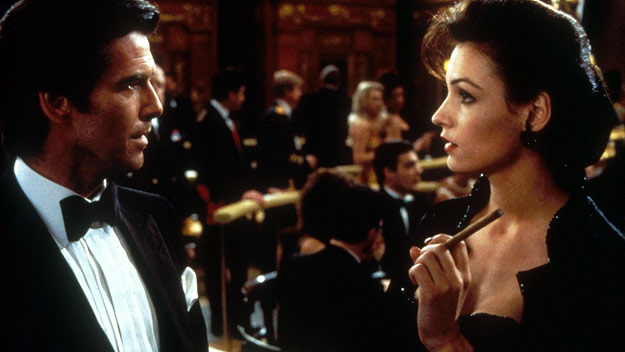
Desowitz: I would rank it as the best of the Brosnans and somewhere in the middle of the pack overall. It was straight ahead with none of the glib or fantastical excesses that would hamper the later Brosnan films.
Funnell: I think that GoldenEye has stood the test of time and remains one of the most exciting films of the series. The film was directed by Martin Campbell who also directed Casino Royale. Campbell seems to have the “Midas touch” when it comes to successfully reintroducing a new actor in the role of James Bond and re-visioning the series. If the producers decide to replace Daniel Craig in the next Bond film, I hope they consider hiring Campbell as the director.
O’Connell: Like a lot of Bond movies—The Spy Who Loved Me, Live and Let Die, The Living Daylights, Casino Royale and, to a degree, SPECTRE—it was a crossroads 007 film that allowed the series to continue. Every now and then a Bond movie puts its neck on the line to justify 007’s very existence. GoldenEye is a prime example, if not THE prime example. GoldenEye is still part of that John Glen era of 007 movie making—with the older Bond guard (Syd Cain, Derek Meddings, John Richardson, Remy Julienne) meeting the (then) new bearers of the production flame (Chris Corbould, Danny Kleinman, Andrew Noakes and Lindy Hemming). I always say that the subsequent Tomorrow Never Dies is Brosnan’s best Bond film (and one of my personal top entries), but GoldenEye is an unabashed 007 movie with the recipe book of Bond open for all to see. Twenty years later one its successes is how it utterly relishes being a Bond movie.
Pfeiffer: I would place GoldenEye probably in the middle of the pack, certainly below the Connery/Lazenby films and some of the Moores. I also favor both Dalton movies over it, but it’s better than some of Pierce’s later efforts and certainly superior to The Man with the Golden Gun and A View to a Kill.
Scivally: For me, GoldenEye ranks in the Top Ten Bond films, but not the Top Five. Although there’s much of Tomorrow Never Dies to recommend it, I felt the ending of that one was unsatisfying. GoldenEye—aside from that damn music—holds together from beginning to end better, and is my favorite of the Pierce Brosnan Bonds. And as a bonus, it has Famke Janssen as one of the sexiest henchwomen ever.
Coate: Compare and contrast Pierce Brosnan’s inaugural performance as Agent 007 with that of the other actors who have portrayed the character?
Caplen: Pierce Brosnan seems to balance the seriousness with which Timothy Dalton approached the role of James Bond with the energetic charm and sexual charisma that Sean Connery imbued in the character. But Brosnan’s performance in GoldenEye has, in my view, a different tone than his subsequent missions, which seem less inspiring as they struggle to define James Bond in the post-Cold War era.
Chapman: Watching it now, I’m struck my how young he looks. In the later films, as he bulked out a bit and his temples started to show flecks of grey, I think he had more gravitas. In fact I think Pierce got better as the films went on, even if the films themselves didn’t. In GoldenEye I don’t think he’s as assured as in the later films. He’s perfectly good in the running, jumping and shooting scenes but some of the dramatic scenes are less confident and—although many regard him as a lighter Bond in the tradition of Roger Moore—I didn’t feel that his delivery of the one-liners was that good. There again he didn’t have any great one-liners: in fact, I’m struggling to think of one!
Cork: For me, Brosnan’s performance is perfect for the film, but it is a tense performance. Brosnan seems so much more relaxed and at ease in Tomorrow Never Dies than he does in GoldenEye. Yet in GoldenEye, Brosnan’s tension works for the film. It is like there is the mission on screen and then there is this other mission: can Brosnan save Bond? And he does. You can tell he is an actor in awe of the part, an actor who all his adult life has been told he should play James Bond, and now here he is. And to his great credit, he pulls it off.
Desowitz: It was an auspicious start for Brosnan. His goal was to recapture the spirit of Connery and he carried himself off well with a good combination of intensity and playfulness. He demonstrated that there was still a place for Bond’s confidence and resourcefulness and the script didn’t make too many demands of him.
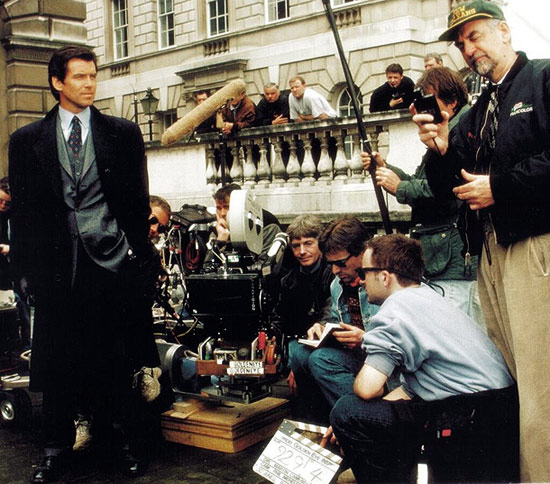
Funnell: For me, Pierce Brosnan’s Bond in GoldenEye embodies some of the best qualities from previous fan favorites Sean Connery and Roger Moore. Like Connery, he is incredibly handsome (especially in a tuxedo), alluring, and charismatic. And like Moore, he is both charming and witty. I personally prefer Bonds who are wittier as this increases my enjoyment of the film; the darker tones of the Timothy Dalton and Daniel Craig films (with the exception of Casino Royale) render them more serious and less adventurous. But at the same time, Brosnan’s Bond is far more action-oriented than Connery’s or Moore’s and his character does treat (some) women in a more positive way.
O’Connell: Brosnan’s best Bond performance is in Tomorrow Never Dies. He is merely stretching his muscles in GoldenEye—including learning how to run, pause and twist. But Bond is not just about his physical dexterity. It is about how he enters a room, leaves a room, talks to the ladies and leaves during the night without warning. In GoldenEye—like all the best Bond debuts—Brosnan makes it look like we have missed two of his films already. There is a great momentum to how he plays those early scenes. Pierce is a great casting bequeath from Cubby Broccoli who thankfully got to see one his Bond hunches take on the baton with all his family at the helm. Brosnan is great in those now iconic scenes with M/Judi Dench. He also never once is out-acted by Dench. Not in any of his Bond films. And that is no mean feat. If anything, Brosnan knows how to pitch the tone and timbre of the role whilst others around him—Sean Bean especially—flounder a tiny bit amidst the Bond tick list ephemera. The classic teaser of Brosnan pausing and walking up to ask the audience if they “were expecting someone else?” was all the reassurances the world needed as a new Bond was on the horizon. It is testament too to how Cubby and Michael were right back in 1986, but the fates had other plans.
Pfeiffer: I thought Brosnan was the right actor at the right time for Bond. He was more serious than Roger Moore and had a lighter touch than Timothy Dalton. The producers have always had an uncanny knack of knowing what actor plays best in certain eras and Brosnan was indeed the best choice at the time, as evidenced by the box-office results. All of his films did spectacularly well. Even when the scripts were weak, Brosnan came out of the film looking good. It’s rather strange because nowadays, Bond fans want an entirely different character on screen—the ultra-realistic, less humorous 007 embodied by Daniel Craig. Doubtless, the pendulum will ultimately swing back again someday. However, during his tenure as Bond, Pierce was an enormous success—and he’s a good actor, to boot.
Scivally: When I first heard that Pierce Brosnan had been cast for the new Bond film, my reaction was severely negative. Although I thought he was good as the Soviet assassin in The Fourth Protocol, I felt he was nonetheless too lightweight for Bond (and I must admit, I never watched Remington Steele). Around that time, some critic—it may have been Gene Siskel or Rex Reed—was quoted as saying that Pierce Brosnan wasn’t a James Bond, but rather the kind of guy you’d cast in an Arrow shirt ad. I felt that about summed it up. Plus, I wanted to see Timothy Dalton get another shot at the role, since it seemed to me that it took Connery and Moore about three films before they really owned the part. But my trepidation about Brosnan lasted only about twenty minutes into watching GoldenEye. By that point, I was won over. When the film ended, I felt Brosnan’s was the best Bond since Connery, with just the right mix of charm and lethalness.
Coate: In what way was Sean Bean’s Alec Trevelyan/Janus a memorable villain?
Caplen: Sean Bean portrays a complex villain whose facial disfigurement is reminiscent of Ernst Stavro Blofeld in You Only Live Twice. Unlike Blofeld, Trevelyan’s background is less mysterious. A former Double-O agent himself, Trevelyan descends from Cossacks, a family history that remained hidden from MI6. The name of his crime syndicate, Janus, alludes to his betrayal of his adopted country and agenda to seek revenge against Her Majesty’s government, which he blames for his parents’ death…. Trevelyan seems, in some ways, like a reincarnation of Dr. No: an emotionless recluse, motivated to crime and global chaos by a personal vendetta. Trevelyan hides behind the shadows of Janus as he orchestrates an implausible scheme to rob the Bank of London. But Trevelyan seems to lack the omnipresence of Dr. No and other villains in the franchise, perhaps an implicit recognition that post-Cold War villainy is decentralized and operating among the shadows. He lacks the gravitas of other villains like Auric Goldfinger, Emilio Largo, Blofeld, and even Karl Stromberg.
Chapman: It was good to have a main villain who posed a real, plausible physical threat to Bond, rather than the supervillain/henchman division that we’d had so often in the past. Sean Bean was in great physical shape back then and you felt that he’s be a match for Bond. In that sense I was reminded of Robert Shaw’s Red Grant in From Russia with Love. The big fight between Bond and Trevelyan is also somewhat reminiscent of Russia…. I liked the historical background for Trevelyan—the idea that his parents had been betrayed by the British to the Soviets at the end of the Second World War so there was a personal as well as a political vendetta—and that the threat was directed at London.
Cork: First, let me say, I love Sean Bean. I think he’s a great actor who continues to do fantastic work. That said, the world can hate me, but I never bought into the idea of 006 as an intimidating villain. Trevelyan says, “I was always better.” Really? No other secret agent is anywhere close to Bond. That’s why we watch Bond films. Originally, Trevelyan was supposed to be Bond’s mentor, and the part was offered to Anthony Hopkins who turned it down. It was then decided to make the character Bond’s peer. Bean has the unenviable task of acting between Famke Janssen (who is just brilliant in the film) and Alan Cumming (who cannot be taken seriously). As a result, his reality-based character is diminished. Trevelyan is not larger than life, which, when one is in scenes with others who are, is a very tough place for an actor. Of course, he has one of the best Bond villain lines out there: “I might as well ask you if all those vodka martinis ever silence the screams of all the men you’ve killed? Or if you find forgiveness in the arms of all those willing women for all the dead ones you failed to protect.” That was a Michael France line, and originally it was this somewhat catty exchange when Bond randomly met Trevelyan on the street in Russia, stunned to find him still alive. Everyone who read the line knew it was brilliant, and draft after draft, it stayed in the script until it found the place it deserved, the point where it looked like all was lost and the villain had Bond defeated. Bean delivers it perfectly. So, despite my quibbles, Bean does a great job with the role. Let me also offer up a huge amount of praise for Famke Janssen in GoldenEye. She is a major key to the success of that film. She serves up all that demented, oversized, sexualized evil that one wants in a Bond villain. She owns the part of Xenia.
Desowitz: Bean’s two-faced baddie wound up being one of the best in years and provided a sense of gravitas. He’s Bond’s mentor turned bad and revealed the dark side of spying and what happens when you don’t survive the Cold War. It was personal and a trial by fire for this Bond.
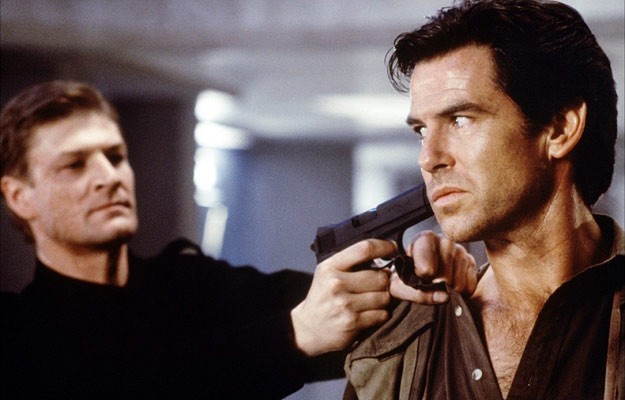
Funnell: Alec Trevelyan is such a memorable villain because he is the first to be a former 00 agent turned British traitor. Long before Raoul Silva embarked on his mission of revenge in Skyfall, Trevelyan had an axe to grind that led him to enact a plot designed to financially incapacitate, if not ruin, Britain. Importantly, Trevelyan is given a tragic backstory, which helps to humanize him as a character and enhance the torment experienced by Bond as he goes up against a surrogate brother. Sean Bean plays the part to perfection and offers a compelling villain.
O’Connell: Sean Bean is one of the miscasts of the series. Not so much his [younger] age. It is forever jarring to have a very known Northern actor trying to sound like an English spy marinated in that Eton-educated, bespoke world when all he clearly wants is a pint down the local with the lads. In a film series that strays from accents and colloquialisms, I would have had Bean keep his Yorkshire accent. It would have marked him out as different to Bond, which the script wants. I also find the performance sees Bean playing someone trying to play a Bond villain. There is no reality to it and—like a lot of the later Brosnan Bond movie dialogue—he speaks in knowing, moustache twirling italics. The villain’s backstory is interesting (the Lienz Cossacks and their betrayals and bungled repatriations) but it is ultimately a human cost and character damage the Craig films eventually did a lot better. Trevelyan also underlines how some of the Brosnan villains suffer for being most interesting in their past rather than the here and now of their fore-story. But the idea of a bad Double O agent is great. It sets up that MI6 world and its relevance to the new world order. I just wonder what the likes of Anthony Hopkins (one of the reported early casting hopes) would have done with it.
Pfeiffer: Sean Bean was well cast in the role of Trevelyan and he had very good on-screen chemistry with Brosnan. The problem from my point of view is that the Bond villains became less memorable. They lacked the grandiose egos and personalities of Goldfinger, Dr. No, Blofeld, Largo, etc. There seemed to be a conscious effort to make them more believable, but to me having a larger-than-life villain is an essential element of the Bond franchise. There have been some wonderful actors playing Bond baddies since GoldenEye, but few of the characters resonate the way the earlier films did. I would say Jonathan Pryce in Tomorrow Never Dies and certainly Javier Bardem in Skyfall came the closet to having the mojo of the classic villains. I think the producers are now able to get “A” list actors for the villains. In the past, there was still somewhat of a stigma about being in a Bond film, as though an actor could not be taken seriously. However, in recent years, they have had some great actors playing interesting characters. I am very enthused to see Christoph Waltz in SPECTRE. It’s a real casting coup. I think we might be going into another “Golden Age” of Bond films.
Scivally: Sean Bean, a contender for the 007 role, did a great job of playing a Judas character, one that our hero initially trusts but who turns out to be the baddie. He delivered the dialogue—and Trevelyan had some of the best villain’s lines in years—with aplomb and, in the final half of the film, a real sense of menace beneath the charming exterior. The flaw in his character is that he starts out as a fellow 00 agent, and once we figure out that he’s the bad guy, we don’t think he’ll pose any real threat to James Bond, because, hey, they make movies about the best British secret agent, not the second best, so we know 006 isn’t going to able to get the best of 007 long before we reach the inevitable climax. That said, the fight scene between Trevelyan and Bond almost rivals the one between Bond and Grant in From Russia with Love; it was fun to have a villain who was evenly matched with Bond from a physical standpoint, which is more than one can say about, oh, you know, Karl Stromberg.
Coate: In what way was Natalya Simonova (Izabella Scorupco) a memorable Bond Girl?
Caplen: Natalya is an important addition to what I term the Post-Feminist Bond Woman Era in my book Shaken & Stirred: The Feminism of James Bond. A computer programmer by profession, she appears self-sufficient, independent, and competent in her field. She’s a survivor, emerging from the rubble after General Ouromov and Xenia Onatopp destroy the Severnaya facility. She’s also resourceful, assisting James Bond in his mission by utilizing technological acumen that he lacks. Although Natalya succumbs to James Bond’s charm (perhaps to M’s chagrin), she ultimately challenges male chauvinism generally (“Boys with toys!”) and Bond’s lifestyle specifically (“You think I’m impressed? All of your guns, your killing, your death, for what? So you can be a hero?”). Her comments offer a refreshing sanity check, reinforcing earlier sarcasm from M and Miss Moneypenny, and revealing a shifting gender dynamic in the film.
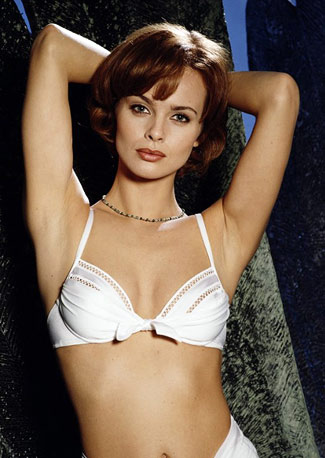 Chapman: The publicity materials were telling us that this was a different kind of Bond girl: modern, independent, not easily going to fall for Bond’s charms, and taking a crucial role in the narrative rather than being just eye-candy. Well, they’ve been saying that ever since The Spy Who Loved Me! I don’t think she was a particularly memorable character or that the performance is anything special. And I wasn’t a fan of the “boys with toys” line, which a lot of others seemed to like.
Chapman: The publicity materials were telling us that this was a different kind of Bond girl: modern, independent, not easily going to fall for Bond’s charms, and taking a crucial role in the narrative rather than being just eye-candy. Well, they’ve been saying that ever since The Spy Who Loved Me! I don’t think she was a particularly memorable character or that the performance is anything special. And I wasn’t a fan of the “boys with toys” line, which a lot of others seemed to like.
Cork: Natalya’s amazingly beautiful, even in that pitiful outfit she’s stuck in for most of the film. Oh, that sounds harsh. I like Natalya as a character. I like her strength. I like that she’s a survivor. When she walks to Bond on the beach in that bikini, every man in the audience is cursing the clothes in the first two-thirds of the film. I also have my reservations about Natalya. She has some kind of crush on Boris? Or just a sisterly affection for him? Seriously? That one is tough for me. When we meet Boris, sure, he has skills writing code, but he’s an absurdly annoying character, completely charmless, misanthropic and misogynistic. Natalya’s emotional connection to him never plays well for me. Her introduction to Bond—screaming her head off—and her continual nagging at him for the scenes that follow do nothing to make me believe that she should be a part of Bond’s world, or that Bond wants to be part of hers. Further, she becomes a character reliant on the cinematic “modern action woman” shorthand when she unexpectedly takes Bond’s Walther, pops the magazine in and out and then cocks it. That business had gotten old and tired even before GoldenEye and in the past twenty years even more of a cliché (I’m looking at you, Madeleine Swann). But Scorupco has charm and holds a scene with her presence. Like Trevelyan, Natalya doesn’t bring that exotic intrigue I so enjoy in Bond women. That is not Scorupco’s fault. It is just one of my nit-picks with the story.
Desowitz: Simonova represents another reflection of post-Cold War survival. The computer programmer also has to overcome her disillusionment with the help of Bond and become more empowered.
Funnell: Natalya Simonova is notable for being one of the most active and integral Bond Girls in a film. She is unintentionally drawn into the conflict when she survives the attack on her Siberian outpost by Xenia Onatopp; she outsmarts the henchwoman by covering her tracks when she hides in the break room. Her intelligence in addition to her computer programming abilities render her a high value asset. More importantly, she is positioned as a partner (rather than sidekick) to Bond—she is the brains while he is the brawn—and only by working together can they bring down the Janus syndicate. And at times, she even takes the lead such as during the train sequence when she commands Bond to find them a way out while she narrows down the location of Trevelyan’s operation. In fact, she speaks up often and demands the best from Bond, pushing him to perform at his capacity. Overall, Simonova is a Bond Girl who plays a vital role in GoldenEye and this does not always happen in other films in the series.
O’Connell: In a Bond film that not only had to methodically lay out its 007 credentials and aim large spotlights at them, it was savvy to take away the vamp and bombast of the main female lead. That is partly because Xenia Onatopp has enough vamp and bombast for everyone, but it leaves Natalya as an almost anti-Bond girl. She is not helpless, but she is also not trying to be “the match for Bond” either. Scorupco was also a classic Bond casting find—unknown, beautiful and a real ambassador for a film which could have easily gone for a name to bolster its relaunch profile, but thankfully didn’t. Most importantly, Natalya is the audience’s way into the picture—and inadvertently a whole new Bond era. The first half of GoldenEye spends more time cutting back to her story and how it illuminates the plot for the audience than it does Bond himself.
Pfeiffer: Izabella Scorupco gave a fine performance in GoldenEye, but I don’t think the character was used very creatively. As I recall, the role was largely humorless and she was griping quite a bit to Bond about this and that. I know they were trying to bring a more realistic and feminist attitude to the traditional role of a “Bond Woman,” but I thought she was overshadowed by Famke Janssen, who had the flashier and more memorable role. I remember at the time griping that they didn’t even give Izabella much in the way of attractive outfits to wear. She seemed to be clad in a dowdy sweater throughout much of the film. Not her fault, mind you... but the “bad girl” tends to always be more memorable in a Bond film.
Scivally: In the classic Bond films, the “Bond women” are often “angels with one wing down,” women who have been, or are being, taken advantage of by unscrupulous men. Natalya Simonova was more in line with what the filmmakers began with Pam Bouvier in the previous film—smart, independent, and able to hold her own with Bond. What makes Natalya memorable is that, by the end of the second act, she’s able to penetrate his hard exterior and touch him on a human level, as we see in the beautifully photographed beach scene. By the final act, she’s transcended from being a Bond woman to becoming virtually a Bond in her own right, helping 007 infiltrate the control station, using guns, fighting, flying a helicopter... one almost expects her to reappear in a later film as 006, having taken over that now vacant position.
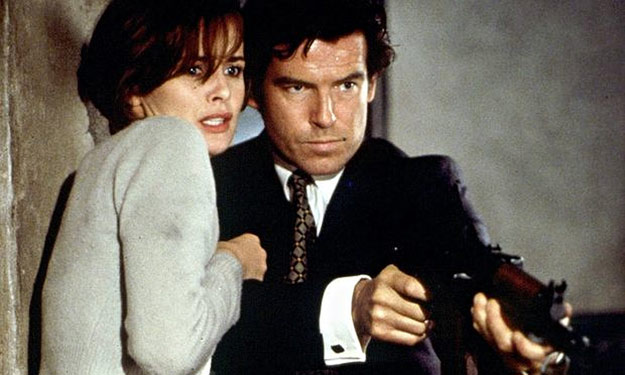
Coate: What is the legacy of GoldenEye?
Caplen: Licence to Kill marked the end of John Glen’s directorial tenure with the franchise. Its successor, GoldenEye, reaffirmed James Bond’s relevance after the fall of the Berlin Wall and did so while introducing a new actor as Agent 007. Pierce Brosnan responded with aplomb, revitalizing the series and redefining gender roles for 1990s audiences…. Outside of the film itself, GoldenEye became a significant edition within the gaming community. The game for the Nintendo 64 console was one of the original—and most celebrated—first-person shooter adventures that paved the way for current popular titles. The game received numerous accolades and effectively introduced James Bond to an even wider audience, expanding the James Bond footprint into interactive media.
Chapman: Put simply it’s the film that repositioned Bond at the forefront of popular action cinema. If GoldenEye had failed, there might have been one more but that would have been it. Instead it proved that Bond could compete in a crowded market for action adventure movies. In hindsight it’s a more traditional Bond than, say, Casino Royale, which Martin Campbell also directed. But without the success of the Brosnan Bonds, we might not ever have had the Daniel Craig Bonds…. It was also the first post-Cold War Bond movie—a motif brilliantly employed in Daniel Kleinman’s title sequence. The Bond movies had always responded to shifting geopolitical conditions, and GoldenEye demonstrated that the end of the Cold War didn’t have to mean the end of shifty heavily-accented Russian villains! General Ourumov’s ambition to be “Russia’s next iron man” might uncannily have anticipated the rise of one Vladimir Putin?
Cork: The legacy of GoldenEye is James Bond’s continued survival. My previous comments can’t properly reflect just how good the film is, how well the film plays, how spot-on the pacing is, how tight the dialogue is, or how well Bond is portrayed and defined in the film. Had GoldenEye failed, that would have been it for 007. The stakes with the film were incredibly high. A huge amount of credit needs to go to Michael Wilson and Barbara Broccoli. Martin Campbell’s tight direction and eye for spectacle lifts the film up. Each writer involved brought great additions to the movie. What exoticness is missing for me in the characters of Trevelyan and Natalya is right there in Peter Lamont’s production design, in Derek Meddings’ miniatures, in the amazing stunt work, and in the great supporting performances. Most of all, the film belongs to Pierce Brosnan. He not only had to carry the burden of filling some very large shoes, he had to convince the world that James Bond still mattered. He did that. All my nitpicks aside, from that first look around a corner in the pre-credit sequence to the unflustered flinch as a bullet ricochets next to his head near the climax, Brosnan is Bond.
Desowitz: The popularity of GoldenEye was a franchise game changer, returning a sense of equilibrium to Bond after the extremes of Moore and Dalton. It reaffirmed the strengths of the franchise were and what fans desired. It served as a template for Wilson and Broccoli and the success that it leveraged throughout the Brosnan era enabled them to take a chance with Daniel Craig and Casino Royale as an origin story.
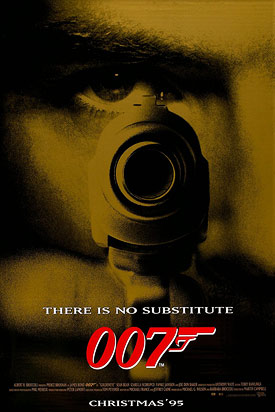 Funnell: GoldenEye should be remembered as the film that resurrected the franchise after a six-year hiatus, adjusted the gender politics and geopolitics of the series, and revitalized James Bond and re-introduced the iconic hero to a new generation of filmgoers. The film also inspired the development of one of the best first-person shooter videogames, GoldenEye 007.
Funnell: GoldenEye should be remembered as the film that resurrected the franchise after a six-year hiatus, adjusted the gender politics and geopolitics of the series, and revitalized James Bond and re-introduced the iconic hero to a new generation of filmgoers. The film also inspired the development of one of the best first-person shooter videogames, GoldenEye 007.
O’Connell: It drew in a massive new demographic of Bond fans who were just too young to catch the film’s predecessors at theaters. It forms an accomplished tick list of everything Bond onscreen is about and there is no better way to appeal to new fans and audiences than laying the DNA of 007 so bare and accessible as GoldenEye does. Also, Martin Campbell. In hindsight I find the direction of GoldenEye effective but maybe not as creatively fluid as what Mendes is now treating audiences to. Bond ’95 put Campbell on the 007 map which ultimately led to 2006’s glittering Casino Royale—which is a far better directed movie and of course the beginning of a second golden age of Bond. Just like The Spy Who Loved Me in 1977, GoldenEye was a vital Broccoli/Eon gambit that paid off. It proved massively successful for Eon Productions, Barbara Broccoli and Michael G Wilson and no doubt got the studios reassessing what they thought of the longevity of the Bond franchise after its six year sabbatical. It offers the first inkling of Barbara Broccoli’s long-term project to pepper the Bond films with top-end talent (Robbie Coltrane and of course Judi Dench). It is worth noting too that the massive impact and importance of the Nintendo 64 GoldenEye game should not be underestimated. Not only is it held up as one of the important notches in the history of gaming, it—like the film itself—enabled a massive swathe of new fans into the Bond world.
Pfeiffer: GoldenEye made Bond relevant for a new generation. It also spawned an amazingly successful computer game that did much to make Bond cool with younger fans. Until then, the demographics were not on the side of the franchise. The primary people going to see Bond were those of us aging baby boomers who grew up on the films of the 1960s. So you have to give credit to the producers for not only bringing Bond back in a big way but also making the franchise more popular than ever. That’s quite an achievement for a 53 year old.
Scivally: GoldenEye will be remembered as the first Pierce Brosnan Bond film, and the one that brought Bond squarely up-to-date with the modern era, repositioning a Cold War character in a post-Cold War world. It also signaled a willingness on the part of the studio(s) to invest more in the budget so that the film could provide bigger, more spectacular thrills. And, beginning with this film, Michael G. Wilson, who had scripted some of the earlier films, stepped back and brought on board younger writers to usher Bond into the new millennium. All the gambles paid off, and after a six year absence from movie screens, GoldenEye attracted a whole new audience of James Bond fans, ensuring that the series would continue into the 2000s (and by that, I don’t mean the year, but the number of films they’ll probably end up making before they run out of steam).
Coate: Thank you, everyone, for participating and for sharing your thoughts about GoldenEye on the occasion of its 20th anniversary.
--END--
IMAGES
Selected images copyright/courtesy Eon Productions Limited, Danjaq LLC, United Artists Corporation, Metro-Goldwyn-Mayer, 20th Century Fox Home Entertainment.
The James Bond roundtable discussion will return in Remembering “Thunderball” on its 50th Anniversary.
- Michael Coate
